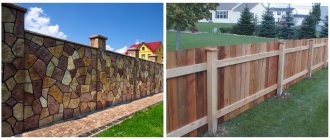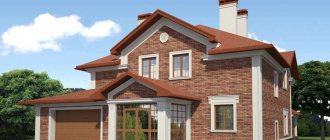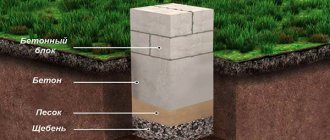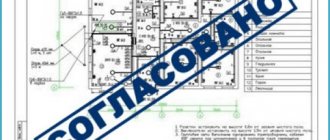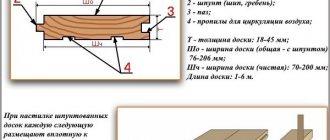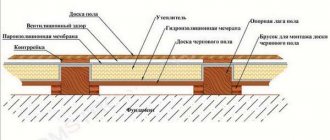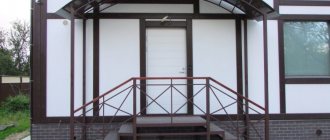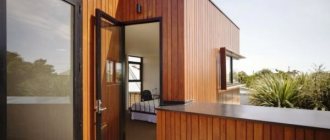Prices
| Size | Length | Price, rub./m2 | Variety | Notes |
| Floorboard 36x150 mm | 6 m | 600 | first | Dry |
| Floorboard 28x150 mm | 6 m | 500 | first | Dry |
| Floorboard 46x150 mm | 6 m | 850 | first | Dry |
Floor boards - how to choose?
Construction boards are the main component of wooden floors. Artificial materials are not used in production; this coating is made from solid wood, therefore it retains all the properties of natural wood. As opposed to, for example, parquet boards glued together from separate layers.
Floor boards are a finishing material, so the requirements for them are as follows:
- The surface treatment is of high quality, without unevenness or roughness.
- Kiln-dried wood is necessary - under-dried boards will quickly lose their appearance and smooth surface.
Groove-ridge is a special design used to connect elements. Each wooden plank has a protrusion on one side and a groove on the other. This is a tongue-and-groove lock, thanks to which the elements fit tightly together. It does not leave gaps during installation and prevents them from appearing when the planks dry out. The edged board is made without locks.
Construction boards are made from the following types of wood:
- ash;
- pine;
- oak;
- larch;
- elm;
- beech;
- elm;
- maple.
Each type has its own characteristics. For example, oak and beech boards are heavy and dense, so pay attention to fasteners and base preparation. These are expensive breeds, but the period of use of such coating is long. Pine and larch are cheaper, but softer, so their service life is much shorter. Alder is a soft but sought-after material.
Any type of wood is afraid of moisture, so the installation of floors should be preceded by waterproofing and the creation of a ventilated subfloor.
Advantages and disadvantages of wooden flooring
Wooden floors are a great solution for an apartment, terrace or home, but before choosing, you should familiarize yourself with the advantages and disadvantages.
- Naturalness and environmental friendliness are the main advantages of this coating.
- Aesthetic appearance is also the reason for the popularity of this material.
- A variety of wood textures allows you to choose the desired design.
- Durability and strength are characteristics that make floorboards superior to other coatings.
- Good additional noise and heat insulation.
- The material can be restored rather than replacing the covering throughout the entire room.
Of the minuses, we note the following:
- wood is sensitive to moisture;
- the material is classified as fire hazardous;
- installation of the coating is complicated;
- Mold and mildew may appear.
Practical experience
There are different sizes of thickness, width and length of boards, but through experience, users have identified the following indicators, which are purchased most often.
The optimal width of the board is 10-10.5 cm, and the thickness is 3-3.5 cm. However, it is important to understand that the width, as the main parameter, should be selected solely in accordance with the overall design of the room.
Types of boards
This material includes several types that differ in function:
- Terrace.
- Parquet.
- Sexual.
The scope of each type is limited due to the characteristics of the material and how the boards are made.
Parquet boards: features of production and use
Parquet board is a thin plate, or lamella. It is glued together from three layers of wood:
- bottom – softwood substrate;
- middle - the main layer that ensures the strength of the board;
- the top layer is a sheet made of valuable wood: beech, alder, oak, ash.
The finished parquet board is varnished in several layers and impregnated with moisture-proofing agents.
The standard thickness of parquet flooring is from 7 to 25 mm. However, the minimum parameters are rarely used: such parquet quickly deteriorates and cannot be restored due to the small thickness of the top layer.
Running material – from 15 to 20 mm. It is affordable and lasts a long time in private spaces. 25 mm parquet boards are suitable for public places where increased demands are placed on the durability of the coating.
Floorboard: types and applications
This type of coating is made from solid natural wood with a smooth front surface. Depending on the method of fastening, there are two types of floorboards:
- tongue and groove – a board with a lock that facilitates installation;
- edged - planed board without fastenings.
The tongue-and-groove material is suitable for finishing: it is easier to install and there are fewer problems with drying out and cracks. But where there are no increased requirements, and the fit density may be slightly lower, edged boards are suitable - they are cheaper. They are used to make subfloors and bath rooms: such a coating does not prevent the passage of water between the boards.
The choice of floorboards is labor-intensive and complex: the degree of humidity, the type of wood and the quality of the coating surface are taken into account - these factors directly affect the life of the wooden floor. The usual thickness of such a board is 25 mm.
Terrace board: specifics and choice
Decking boards, like flooring, are made of solid wood, but are intended for use in places with high humidity and outdoors. Despite the similarity of the material, this coating has a wavy front surface. This reduces slipping, which is why decking near swimming pools is often made from this material.
There are also disadvantages to using decking boards: the non-standard surface makes the boards difficult to process. A high-quality board is equipped with ventilation ducts located along the bottom, this must be monitored when purchasing. The thickness of the terrace flooring varies, but 35 mm boards are most often used.
Laying for now
Installation of a wooden floor made of tongue and groove boards is carried out as follows:
- The logs are set and leveled horizontally in increments of 40–50 cm.
- The first board is nailed with a distance of 10–15 mm from the wall and a groove to it to prevent damage to the tenon when tapping (joining) the floorboards.
- The next five to six boards are laid without fixing. They are then held together using a hammer and wedges before being nailed down.
- The procedure is repeated with the next few floorboards.
- The board of the last row is cut so that there is a ventilation gap of 10–15 mm near the wall.
- Finally, the floor is sanded, if necessary, and then the baseboards are nailed.
There is nothing special about the installation of this finish. It’s easier to lay only the varnished coating; step-by-step instructions on how to lay laminate flooring with your own hands consist of three or four points.
When laying boards, you can fix them on the joists using screws and nails. It is permissible to screw (drive) fasteners from above or into the end of the floorboard. The second option is more aesthetically pleasing, but will create repair problems later.
Step-by-step instructions for laying the floor
Calculation of board size
The size of the boards when purchasing is calculated according to the following criteria:
- room dimensions;
- area of use;
- planned loads.
The intended functions of the material also matter: for example, a 20 mm floorboard will be used for the rough coating, and in such cases, low quality material is used.
Coating thickness: calculations and optimal options
This parameter is selected based on the expected loads on the flooring. The design of the lags is also taken into account; the smaller their pitch, the thinner the board is taken:
- with a step of 60 cm - 35 mm board;
- with a step of 30 cm - 25 mm board;
- with a step of 100 cm - a board of 50 mm.
However, nuances may arise due to the conditions of use. If heavy loads are expected on the floor covering, it is better to take the thickness of the boards with a margin, to be on the safe side. Therefore, in residential premises the most used floorboards are 35 and 45 mm. For a rough base, on the contrary, the optimal choice would be 25 mm material. We must not forget that thin edged boards cost less, but joists will have to be laid more often to properly distribute the load.
Coverage width: selection conditions
The criteria for choosing the width of the slats are the geometry of the room and its dimensions. The choice of sizes is large, but the chassis stands out: from 80 to 140 mm.
The complexity of installation depends on the width of the material: the wider the planks, the more problematic it is to install. Such boards require careful preparation of the base. The downside of planks that are too wide is that they are susceptible to deformation due to changes in humidity and temperature. The optimal parameters are 100-120 mm wide.
The length of the slats can also be chosen by the client: 3–6 meters. When choosing, the dimensions of the room and size are taken into account to reduce the amount of waste.
Array
This approach implies the presence of a lock on the edges of the boards, on one side they have a groove, and on the other - a ridge. It is noteworthy that this design allows for maximum reliability even when the boards dry out, which gives them even greater strength.
The optimal size of such boards reaches 5-6 meters, although many workers also lay three-meter products. The important thing is that short boards will create an unsightly cut-off appearance.
Rules for choosing boards
The material and type of wood covering are chosen based on the functions and purposes of each type of wood and the purpose of use. The financial issue also means a lot: for example, beech or oak flooring is of high quality, durable, but extremely expensive.
Below are rules that will help you make the right choice:
- Open spaces (verandas, terraces, gazebos) require special material due to changing weather conditions. A suitable option is a terrace lamella. Ideally, from species such as larch, ash or oak. They are not afraid of temperature changes and high humidity, so they are used for outdoor use. To prevent puddles from accumulating on the veranda or gazebo, a special corrugated surface is selected.
- It is better to decorate residential premises with a fine finish with tongue and groove boards. Species are selected based on taste preferences and financial capabilities: alder and oak look presentable, they are durable and strong. But coniferous wood costs less, and high-quality finishing that matches the style of the room can be done using finishing materials.
- A cheap option suitable for rough wooden floors is uncut softwood boards.
- When choosing materials for a bath, you must take into account: pine and other conifers are not suitable for such use. High temperature affects the lamellas, they release resin and, moreover, are highly susceptible to moisture. An option for high-quality finishing of such premises is larch.
Poor quality product: warnings and tips
Unfortunately, such material is not uncommon. Therefore, you need to know the signs by which to look for boards of suitable quality. There are not many criteria. When purchasing, make sure that:
- The general appearance corresponds to the material class.
- Humidity is kept within acceptable limits of 15-20% (otherwise, the laid coating will dry out after some time and become deformed).
- The tongue-and-groove board lock is easy to assemble, the parts adjoin each other without gaps or cracks.
- The geometry of the tongue and groove floorboard is correct: the planks are the same in length and width. Another point is the plane of the panels - misaligned planks will cause problems during assembly.
Such simple tips will help you determine the quality of products by eye.
Wood species
Before you purchase natural flooring material, you need to study its properties and select the material that is optimally suited to the operating conditions.
Types of wood:
| № | Wood type | Characteristics |
| 1 | Coniferous trees | They are most in demand because they have the best price-quality ratio. Pine and spruce contain a large amount of resins, which protect the material from destruction under the influence of humidity and protect against the formation of mold, as they are a natural antiseptic. Fir requires treatment with antiseptic agents, as it contains an insufficient amount of resin. Conifers emit a pleasant smell into the air, which has a beneficial effect on the human respiratory system. This material has good vapor permeability, which allows you to maintain a normal level of humidity in the room. |
| 2 | Aspen and alder | They do not have a significant service life and have insufficient strength. But they have a positive effect on human health, as they release beneficial tannins. Most often they are used for installing floors in children's rooms, baths and private saunas. Not suitable for installation in rooms with high traffic and high loads. |
| 3 | Linden | Requires treatment with an antiseptic, since the wood has insufficient strength and is susceptible to the formation of fungi and rotting. It is inexpensive, retains heat well in the room, emits a fragrant smell, and has a beautiful structure. |
| 4 | Cedar | It has a very beautiful structure, is highly durable and resistant to high humidity. In addition, the essential oils contained in wood have a beneficial effect on health and help maintain a healthy indoor microclimate. This type of wood has a high cost, but pays off due to its unique qualities. |
| 5 | Siberian larch | It comes in 12 shades and is highly durable and durable. Larch is resistant to moisture and is not susceptible to rotting or mold. Releases aromas into the air that have antiseptic properties, thereby maintaining a healthy climate in the house. |
| 6 | Oak | It has long been famous for its strength and long service life. The material does not lose its properties under the influence of moisture and is not subject to putrefactive processes and the formation of fungal infections. It has high rates of heat saving and sound insulation. It has a high cost, but due to its durability it pays for itself during use. |
